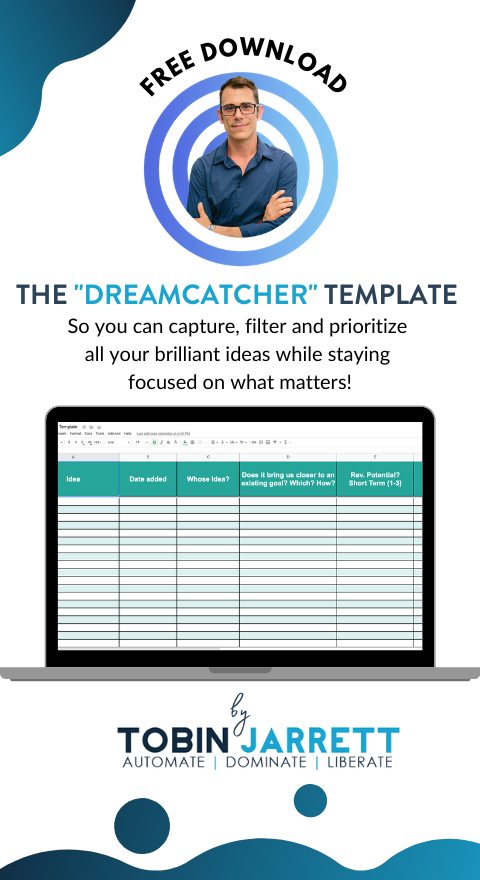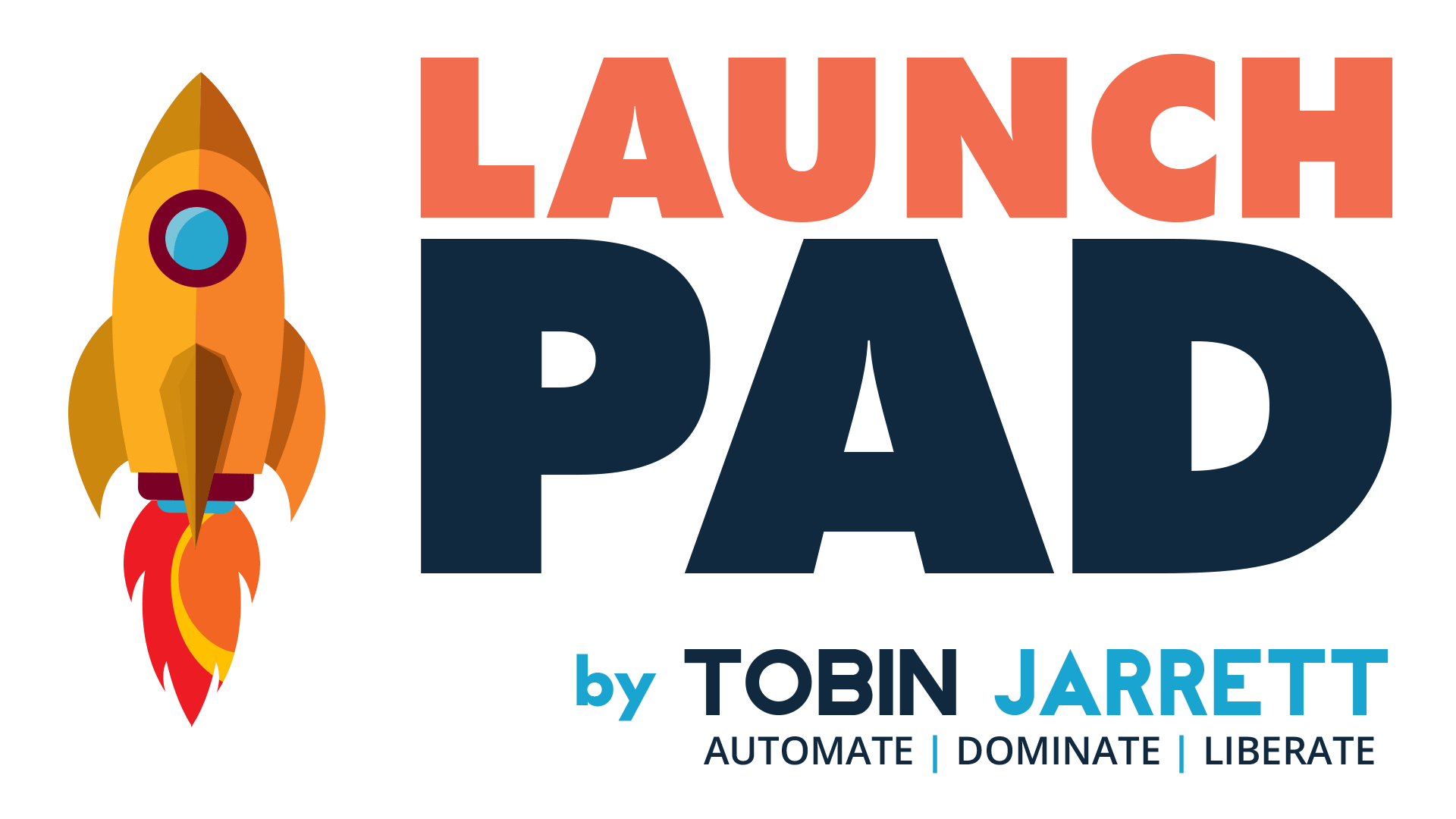As a marketing automation expert, I tend to focus on how to add automated systems to help you gain leverage, but today I want to talk about what you can stop doing (or do less of).
A few years ago, I spent an intensive day with my brilliant mentor, Justin “J-Mac” MacDonald. He asked me about my goals and to tell him all the stuff I was doing in my businesses.
At the time, I was spending a handful of hours each week supporting my wedding photography business. But the revenue from my consulting business dwarfed what my photography business was generating.
J-Mac asked me what might be possible if I were to simply “set down” the activities I was doing for the photo business, and allocate those hours each week to the high-leverage activities in the consulting business.
I could see his point, but I was initially resistant to the coaching. Turns out that after all those years of shooting weddings, part of my identity had become “Tobin the Wedding Photographer”.
Once I noticed that, it became simple, and even easy to do. I immediately stopped the vast majority of photography business-related activities.
I gained a ton of extra time and leverage to focus on what mattered most: generating more revenue, and creating value for my consulting clients.
Like many entrepreneurs, my brain is constantly whirring with ideas for my business. Many of these ideas, at the time of their inception, seem properly brillant (IMHO), so I was spending a decent amount of my and my team’s time taking action on these ideas.
- Ideas for new marketing strategies…
- Ideas for new products and services…
- Ideas for new partnerships…
- Ideas for new lead sources…
- Ideas for new tactics…
- And on and on…
Trouble was, I had no system to first vet the ideas for their worthiness relative to the goals and priorities of the business…so we spent an embarrassingly long time in this business with diluted focus, which, of course, led to diluted effectiveness.
Sound familiar?
Chase two rabbits, catch neither.
It makes sense: the more things you try to do, the less effective you’ll be at each thing.
Consider: What projects, tasks, activities could YOU (or your team) stop or dramatically reduce that would free you up to pour the rocket fuel of your laser focus onto the high-leverage activities in your biz?
And yet, some ideas are worth pursuing! And the fear of forgetting a good idea is real.
That’s where the “Dreamcatcher” comes in.
Basically, the Dreamcatcher is just a place where you can capture ideas as they come up and vet them for worthiness.
Gotta give credit where it’s due – I learned about the Dreamcatcher from the coaching I received from the folks at Sixth Division.
Here’s the deal…as ideas spout forth from the mouths of you and your teammates, instead of dropping everything and acting on them, you pop ‘em into the Dreamcatcher so you don’t forget them.
Naturally, freshly hatched ideas all tend to have that shimmery vibrance that can make them seem like they’re amazing. That’s why it’s better to evaluate the true merit of any idea once it’s had a chance to cool some.
Because not all ideas are created equal.
And pursuing any idea comes with a cost: the time, energy and other resources that its pursuit will take away from the other projects and activities.
Opportunity cost.
That’s the other way you can use the Dreamcatcher…as a tool you can use to (somewhat) objectively evaluate ideas so you can better gauge whether and when to allocate your resources to pursuing the idea.
Stuff like:
- Will this bring us closer to an existing goal? Which one(s)? How?
- How will we know if we’ve been successful?
- How much revenue potential does this idea represent? Short term and long term?
- How much of my time will this take?
- How much of the team’s time will this take?
- What’s the opportunity cost if we were to act on it now?
We use a spreadsheet around here. Super simple.
Just pop the idea into the Dreamcatcher, spend 5 minutes populating the columns for each of those questions, above, and then get back to work on the current projects.
Then, revisit the Dreamcatcher periodically (monthly, quarterly and yearly), folding in those ideas that make the cut. Then we bring the winners into our project management software and set about making them manifest.
If you’d like to have a template for this based on what we use around here, you can snag yours at the bottom of the blog post!
GET THE "Dreamcatcher" TEMPLATE NOW FOR FREE...

got a business? we can help.
we can help you turn your business into a predictable profit machine!
I was the 3rd member of the original founding team at Ontraport.
For nearly a decade, my team and I have been helping entrepreneurs turn their businesses into predictable profit machines through great strategy and implementation.
We focus on designing strategic systems that drive revenue and profit, and save you time and hassle. We’ve got a variety of programs available for everyone, from the solopreneur just starting out to the multi-7-figure juggernaut looking to scale up even more! Click below to learn how we can help you!
Thinking of becoming an Ontraport user? Smart.
We’ve got you! Ontraport is our favorite all-in-one online marketing platform. Best of all, you can sign up for a FREE TRIAL of Ontraport through us and you’ll get LaunchPad – our incredible bundle of valuable bonuses worth $1,982.
Click here to learn more. Note that you must follow the instructions on this page to qualify for the bonuses!




